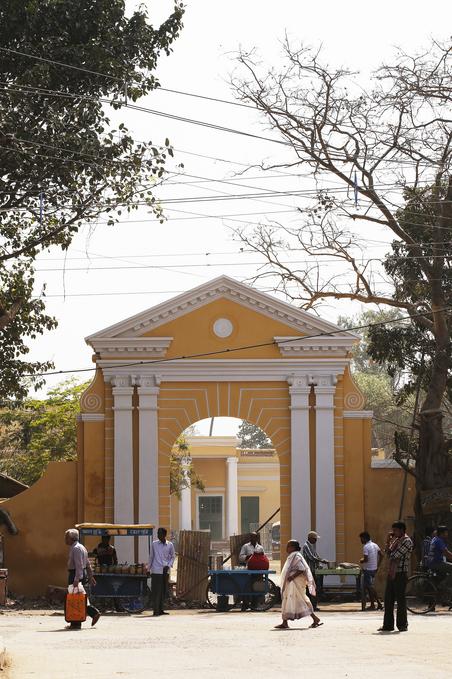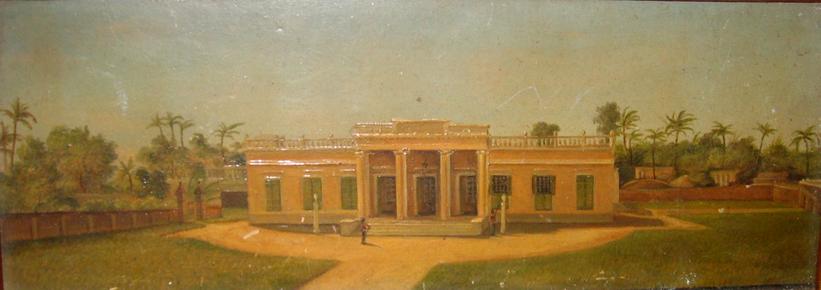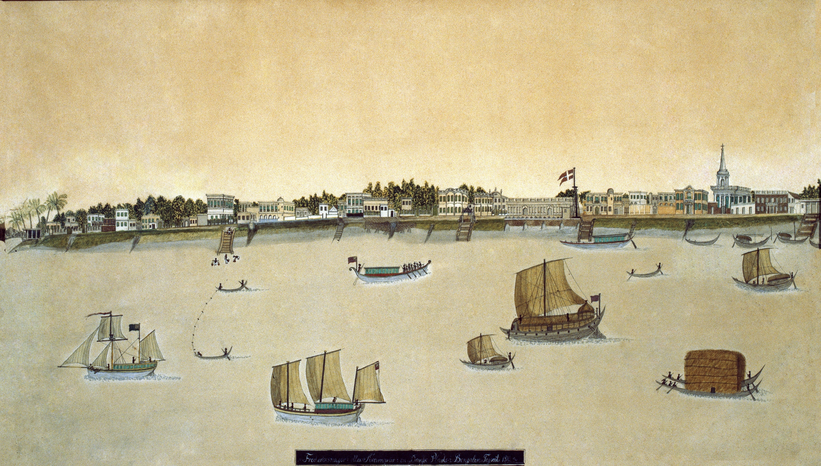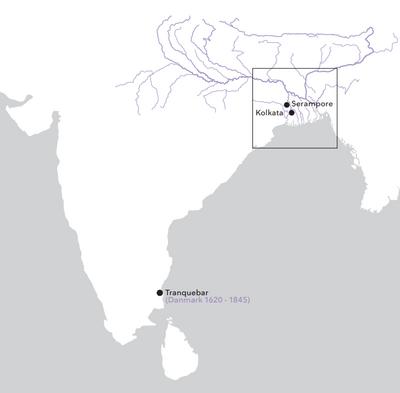The Danish Trading Post

In 1755, the governor of the Indian Mughal Empire granted the Danish Asiatic Company permission to establish a colony in Serampore. The Danes were given the right to buy up local goods in exchange for taxes paid to the governor. They were also responsible for maintaining law and order and collecting taxes in the area.
Serampore was given the Danish name Frederiksnagore. In the beginning, it was referred to as the least significant of the European trading posts along the Ganges River. However, the town quickly grew. Europeans and Indians who had made their fortunes on the European colonial trade built their luxury estates in Serampore. The wealthiest Indians, like the Goswami family, built grand palaces. Many other Indians also moved to the town, including weavers, other specialist tradesmen and people who worked as servants for the rich families.
In 1777, Serampore came under direct administration of the Danish Crown. It was no longer merely a trading post – it was a Danish town in India. Serampore continued to grow and thanks to its elegant houses and palaces, it became known as the most beautiful European town in India. In 1845, the Danes sold the town to the British, who, at the time, were assuming control of the entire country.
The Danish centre of the city consisted of a landing place by the river where the large warehouse was located. This was where the finest Indian cotton, silk and other commodities were stored before they were shipped off to Europe. A road stretched from the river to the Danish government compound, which was surrounded by a protective wall. This was where the government officials lived. The Danish Government House was the centre of the Danish administration and the private residence of the head of Serampore.
The Centre of Power for 260 years
The area behind the historical wall has been the centre of power in Serampore ever since. The British used it after they took possession of Serampore in 1845, and after India gained independence in 1947, the local government has had its offices and courthouses in the area serving 1.5 million residents. The compound is also home to one of the city’s most important green spaces where people meet to drink tea and play cards beneath the shade of the trees, and children gather there to play cricket and other games. Used since 1771 as government and court building during the Danish, British and Indian rule, the Government House still stands today. However, the house fell into disrepair and was closed in 1999 due to danger of collapse.

Restoration
Now, the State Government of West Bengal has restored the government building with the assistance of the National Museum of Denmark’s architectural advisor. The house is used as a public office of culture and tourist information. The National Museum of Denmark has overseen the renovation of the two old Danish gates leading into the compound as well as a smaller office building which has been repurposed as a local restaurant. The area lives on as the public centre of Serampore with Danish, British and Indian government buildings existing side by side.

Restoration of the Government House
The State Government of West Bengal
Restoration of the Main and South Gate
The National Museum of Denmark with funding from Realdania
Local partner: Indian National Trust for Art and Cultural Heritage (INTACH)
The National Museum of Denmark’s Collaborative Partners
West Bengal Heritage Commission
Hooghly District
Serampore Municipality

